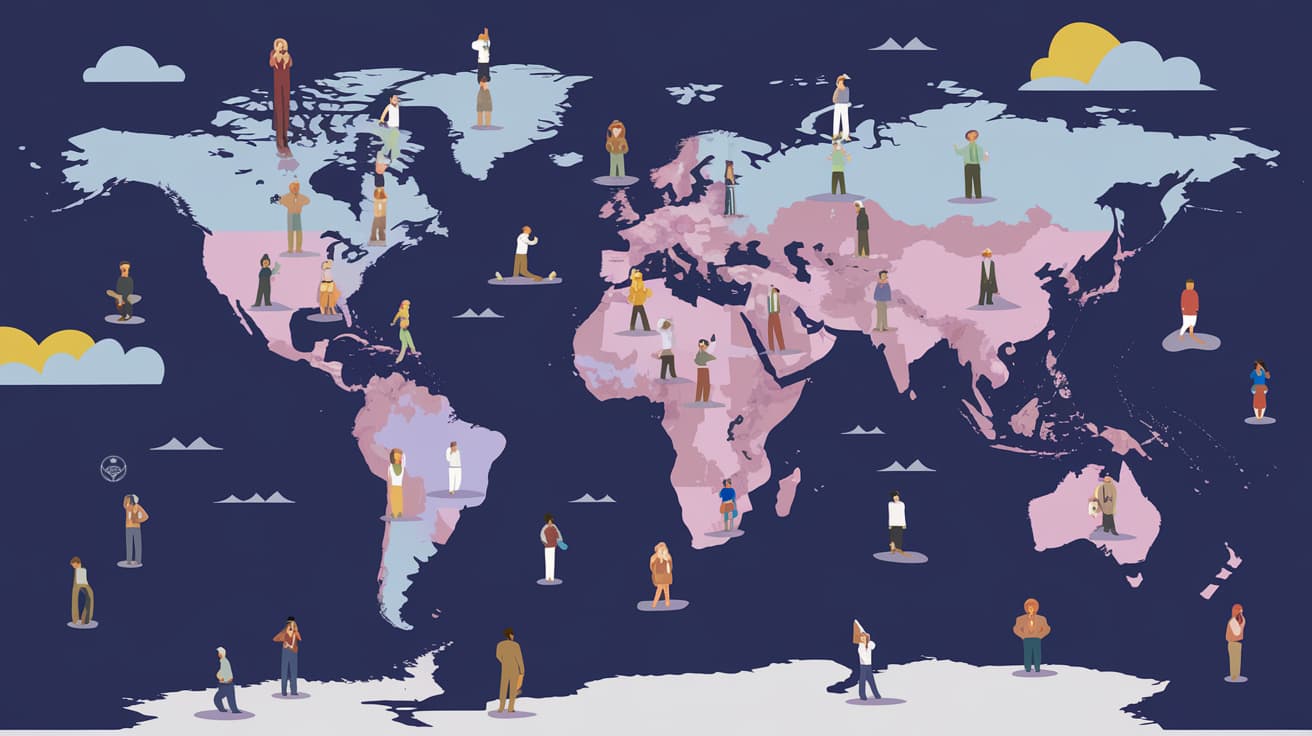Neurodiversity Across Cultures: A Global Perspective
Neurodiversity across cultures is fascinating, isn’t it? The idea that neurological differences are a natural and valuable part of human diversity is picking up steam. But here’s the thing: not everyone sees it the same way. Depending on where you are, neurodivergence might be celebrated, misunderstood, or completely overlooked. It’s a bit like trying to explain Marmite to someone who’s never had it, because you either get it, or you really don’t.
So, let’s take a trip around the world to explore how different cultures view neurodiversity. Along the way, we’ll uncover some surprising challenges, heartening progress, and maybe even a few “you can’t make this up” moments.
What Is Neurodiversity?
At its core, neurodiversity is the idea that conditions like autism, ADHD, dyslexia, and dyspraxia are simply variations in the human brain, which are not problems to be fixed. It’s like looking at life through a different lens: unique, valuable, and occasionally a bit foggy, depending on the weather. he challenges often arise not from neurodivergence itself, but from the pressure to conform to a society designed with neurotypical minds in mind.
Unlock peak brain performance with science-backed biohacks. Join free now & get your guide for just £4.99 (45% off)!

This paradigm shift is moving from “curing” neurodivergence to embracing it, which sounds great, right? But how it’s received depends heavily on cultural attitudes. Some regions are leading the charge, while others are, let’s say, still waiting for the memo.
Neurodiversity in Western Cultures
In many Western countries like the UK, the US, and parts of Europe, the neurodiversity movement is gaining real traction. Advocacy groups are working overtime to reframe conditions like ADHD and autism as differences, not deficits. Schools and workplaces are catching on too, offering accommodations like tailored education plans and noise-cancelling cubicles. Fancy, right?
But before we start handing out gold stars, let’s address the elephants in the room: access and bias. Support often depends on your postcode (or post/zip code) and your wallet. And stereotypes? Still alive and kicking. Women and individuals from diverse ethnic backgrounds are frequently underdiagnosed, thanks to outdated assumptions and systemic barriers. So, while progress is happening, there’s still plenty of room for improvement.
Neurodiversity in Eastern Cultures
Meanwhile, over in Eastern cultures, the story looks a little different. Collectivism, family honour, and conformity often shape the narrative around neurodivergence. In places like Japan, China, and South Korea, there’s a heavy emphasis on academic and professional success. For neurodivergent individuals, this can feel like trying to climb Everest in flip-flops.
Stigma still looms large, with traits like autism or ADHD often misunderstood, or possibly worse, seen as something to hide. But it’s not all doom and gloom. Japan, for instance, has seen a surge in autism advocacy, and social media is giving neurodivergent individuals a platform to share their stories and find their place. Small steps, but steps nonetheless.
Indigenous and Traditional Perspectives on Neurodiversity
Let’s switch gears and talk about indigenous cultures, where things get really interesting. Some Native American communities, for example, see neurodivergence as a gift—think spiritual insight or creative brilliance. Similarly, certain African and South Asian traditions interpret these traits through ancestral or spiritual lenses. It’s a refreshing take, isn’t it? We here at Herbal Biohacker see it as a Superpower.
But there’s a catch. While these perspectives can be uplifting, they sometimes overshadow practical needs like education or healthcare. Balancing traditional beliefs with modern support systems is key to ensuring inclusivity.
The Role of Language and Diagnosis
Language plays a powerful role in shaping cultural attitudes. In some regions, terms for conditions like autism or ADHD carry negative connotations, perpetuating stigma. Additionally, access to diagnosis varies widely. In low-income areas, limited healthcare infrastructure can make diagnosis and support almost unattainable.
Diagnostic frameworks also differ across cultures, sometimes leading to underdiagnosis or misdiagnosis. For example, Western criteria may not account for culturally specific behaviours, highlighting the need for more culturally sensitive approaches to research and care.
Towards Global Inclusivity
Despite these disparities, there are promising developments:
- International Advocacy: Organisations like the United Nations and WHO are championing neurodiversity awareness, encouraging inclusive policies worldwide.
- Technology and Social Media: Platforms such as TikTok, YouTube, and Instagram are helping neurodivergent individuals connect, share experiences, and advocate for change across cultural boundaries.
- Cross-Cultural Collaboration: Partnerships between countries and organisations are facilitating the exchange of ideas and best practices for supporting neurodivergent communities.
Conclusion: A Shared Responsibility
Neurodiversity across cultures is universal, yet its acceptance and integration vary widely. Understanding these differences is crucial for building a global society that truly celebrates neurological diversity. Embracing neurodiversity isn’t just about awareness—it’s about equity and ensuring that everyone, regardless of cultural context, has the opportunity to thrive.
By working together, sharing ideas, and respecting cultural nuances, we can create a more inclusive world where every individual’s unique perspective is valued.
Join the Conversation (Or Start Your Own)
At Herbal Biohacker, we’re building a community where discussions like these can flourish. Whether you’re curious about therapies, have your own experiences to share, or just want to connect with others navigating similar journeys, we’d love for you to join us. Let’s learn, share, and grow together.







